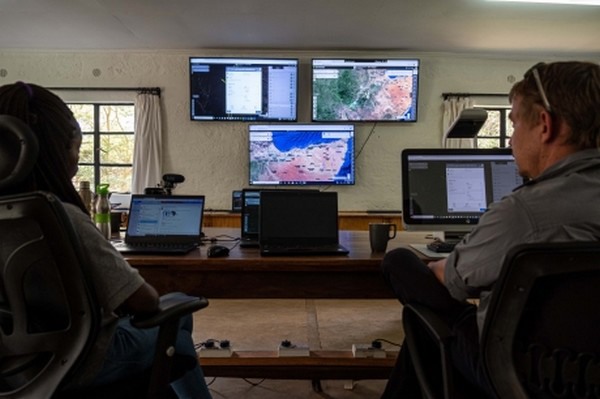For the unsuspecting farmer, the Desert Locust is a formidable enemy. These wretched pests have a voracious appetite, multiply rapidly and travel up to 150 kilometers a day with the capacity to devour vast swathes of crops and pastureland on the way. In the past year, waves of the insidious insect swept across East Africa, Yemen and southwest Asia in massive swarms that contained up to 80 million in a single square kilometre.
The threat to agriculture and food security has been immense and the challenge to bring them under control, urgent. In response, FAO, with partners and donors, developed an array of high-tech tools that revolutionized locust detection, surveillance and treatment, helping affected countries to effectively control them.
Using climate data and weather forecasting, FAO has been at the forefront in the fight against locusts for decades. Its ground-breaking eLocust3 tablet, which field teams use to collect crucial data around the world and feed it to FAO’s Desert Locust Information Service, meant that FAO and national authorities could map locust movements and stay one step ahead of the game.
"It’s really the Rolls Royce of our data collection tools," says Keith Cressman, FAO’s senior locust forecaster.
But, despite the tablets being used in 20 countries, the latest locust emergency meant that demand skyrocketed and time was too short to train the farmers and pastoralists. FAO was fighting a battle on several fronts and needed a heavier hand to tackle the onslaught.

Remote communication tools
By January 2020, Desert Locust swarms the size of Paris or New York were sweeping across the Horn of Africa, a region already impacted by poverty and food insecurity. With the pests’ ability to multiply 20 times with each generation, every day that passed made the fight more challenging.
Up against the clock, Cressman turned to researchers at Pennsylvania State University’s PlantVillage, which provides technological solutions to farmers and had previously created an app to help FAO track another dangerous agricultural pest, the Fall Armyworm.
In less than a month, Cressman and the developers created a simple smartphone app to allow anyone, even with little training, to collect locust data in the field. But, not every farmer has a cell phone and plenty of areas in East Africa are totally isolated from any network. So FAO also partnered with global GPS supplier Garmin, to modify a satellite data communicator that would overcome connectivity obstacles in areas that have none.
Though FAO now receives up to 2 500 records of data a day, nearly 25 percent of the data is unusable or incorrect and FAO again turned to PlantVIllage to harness artificial intelligence to rapidly identify and remove the unwanted data. FAO’s Desert Locust team then shares this data with control teams on the ground and in the air so they can quickly identify the location of the swarms, and then target and kill them.
For more information: fao.org
